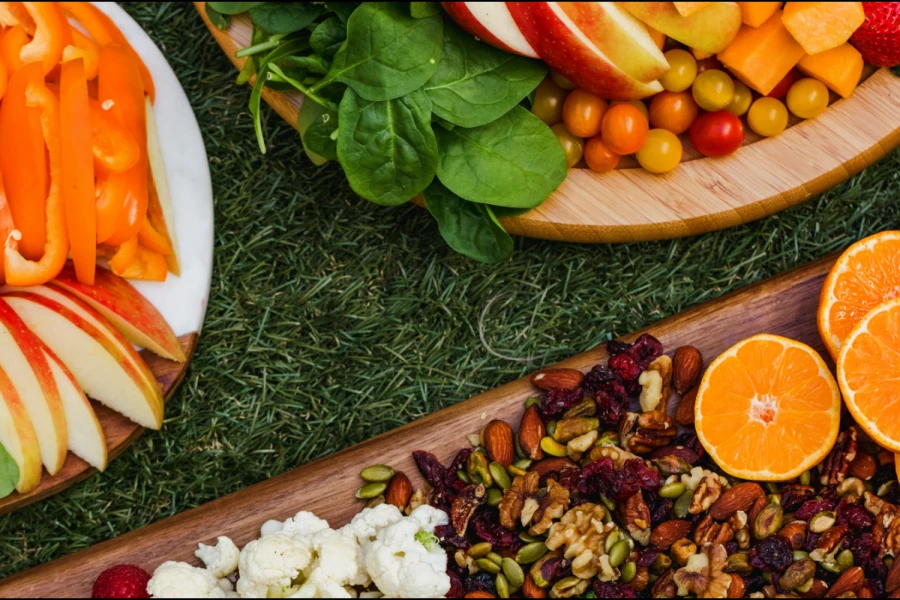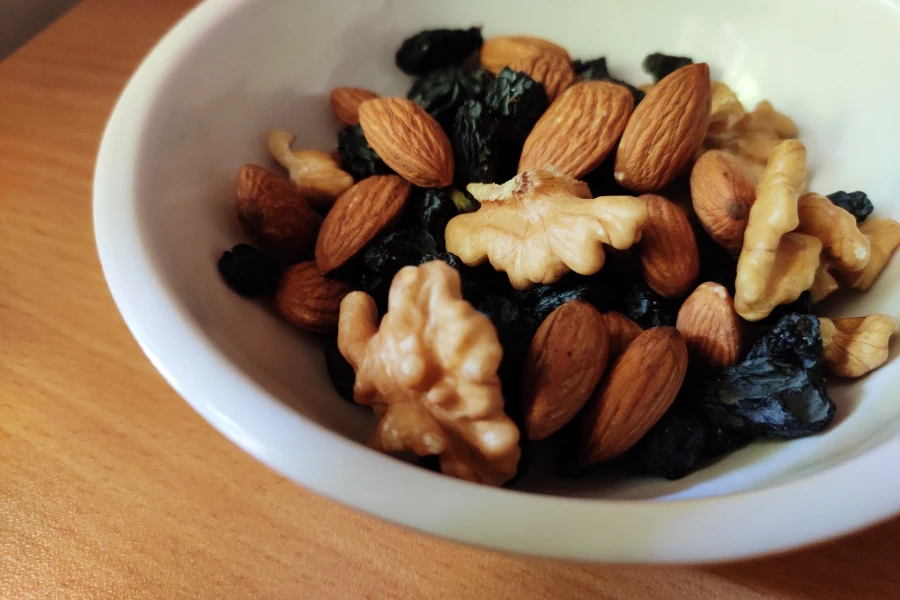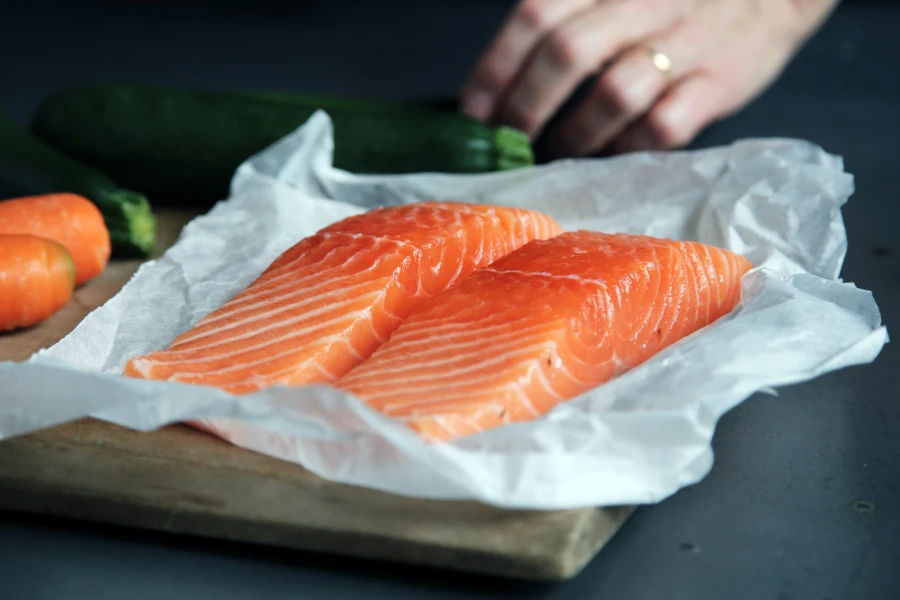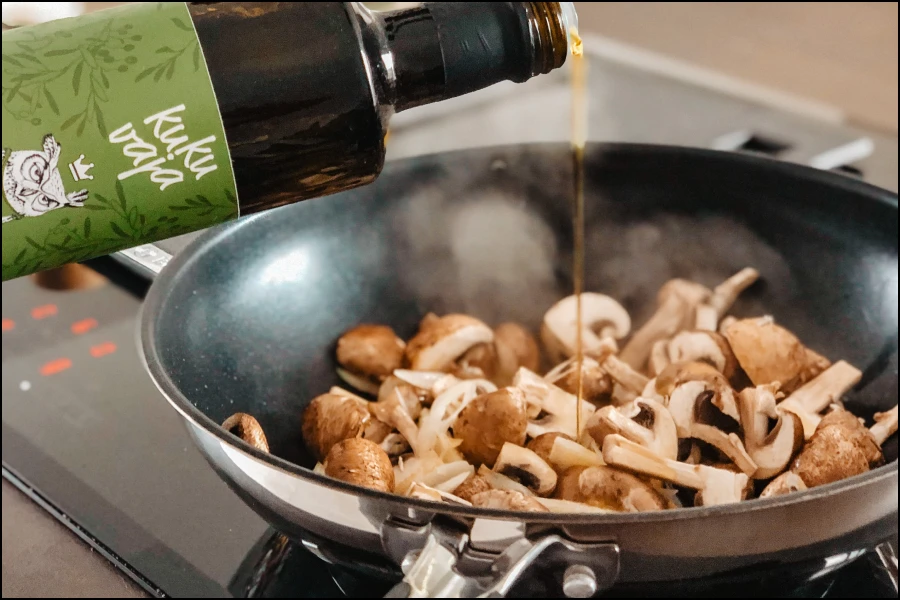Eating healthy
- Karen Slye, Dietitian
- 11 minute read
- Last updated: September 2023
The right dietary changes that can really make a difference when it comes to keeping healthy. The Mediterranean diet is recommended for people after a stroke as it has been proven to reduce stroke risk.

Did a dietitian provide you with a specialist diet in hospital?

If so, do not follow the advice below. Instead, follow the diet and nutrition advice given to you by your dietitian.
The Mediterranean diet

A Mediterranean diet is typically based on whole or minimally processed foods. It is rich in fruits, vegetables, beans, nuts, wholegrains, fish and olive oil.
It is low in fast food, sugar-sweetened beverages, refined/processed grain products and red meat. A moderate amount of poultry such as chicken is allowed, as is a moderate amount of alcohol with meals.
Recommended foods

Fruit and vegetables
Target: Five to seven portions of fruit and vegetables a day.
What is a portion of fruit?
One portion weighs roughly 80g. This could be an apple, a handful of berries or three heaped tablespoons of fruit salad.
A maximum of one 150ml glass of fruit juice counts as a one daily portion. Fruit juice is low in fibre and contains a lot of natural sugars, which may affect blood sugar levels.
What is a portion of vegetables?
One portion of vegetables is three heaped tablespoons whether raw, cooked or tinned. A dessert bowl of salad counts as one portion.
Your pharmacist will likely recommend that you avoid grapefruit.

Nuts
Target: A handful (30g) daily.
Nuts are a source of healthy fats. They are high in calories, so you only need a small handful. Go for unsalted nuts like walnuts, brazil nuts, cashews and almonds. Try roasting them on your grill at home to add flavour.

Fish
Target: A serving (140g) of fish at least three times a week.
Fresh, frozen or tinned fish all count. Aim to eat at least one portion of oily fish per week. Oily fish includes salmon, mackerel, herring, trout, sardines and fresh tuna. It is not recommended that you take an omega-3 supplement, as ideally you should be able to get your omega-3 from your diet. A review of the evidence in 2020 found little or no benefit of taking Omega 3 supplements on stroke risk.

Wholegrains
Target: Try to include more wholegrains in your diet.
Start off by adding wholegrains into some of your main meals. Try brown rice instead of white, use wholewheat pasta and couscous. Look for wholegrain breakfast cereals, such as Weetabix, All-Bran, bran flakes and sugar-free muesli. Choose wholegrain bread, and try bread made with rye and other grains. Oats can help lower cholesterol. Oat bran, rye and barley all help too. Try a couple of oatcakes as a snack, or add barley into a stew.

High-fibre foods
Target: Adults should aim to eat 25-35g of fibre a day.
Fibre is found in plant-based foods, not in meat or dairy. It is vital for lowering cholesterol, keeping blood sugar levels stable and managing your weight. The amount of fibre in food can often be found on the label. If you are increasing your fibre intake, it is important to make sure you are drinking enough fluids. Without enough fluid, the fibre can’t provide all of its benefits and may cause constipation.
The two main types of fibre: soluble and insoluble
Soluble fibre
Soluble fibre delays the time it takes for you to digest food, making you feel fuller for longer. It can regulate blood sugar levels and help reduce cholesterol. Soluble fibre is found in grains (oats, barley and rye), fruit, vegetables, beans, pulses and peas.
Insoluble fibre
Insoluble fibre shortens the time it takes for food to move through the bowel, and can also improve the balance of good bacteria in the gut. Insoluble fibre is found in the skins of fruit and vegetables, in wholegrain varieties of starchy foods like pasta and bread and in cooked potatoes with the skin on.

You can buy products fortified with plant stanols and sterols
Eating some of these daily may help to lower your cholesterol. (Examples: Benecol and Flora ProActiv products – spreads, yoghurt, yoghurt drinks and soft cheese.)
Diet watchlist
Red meats
Target: Try limiting red meat to a maximum of three times a week.
Red and processed meats are high in saturated fat and can be high in salt, They are best replaced with white meat, like skinless chicken or turkey, fish or vegetarian sources of protein.
Choose lean cuts of meat and trim off visible fat.
If cooking with mince, look for mince with “less than 5% fat” on the label. Beans and pulses are a good alternative to meat and fish. They are low in fat and contain soluble fibre that can help lower your cholesterol.
Karen Slye | Dietitian |
Salt
Too much salt in your diet can increase your blood pressure, increasing your risk of a further stroke.
Salty foods:
- tinned or packet soups
- ketchup or ready-made sauces
- bacon, sausages and burgers
- salty savoury snacks like crisps
Alternatives to salt:
- dried herbs
- spices
- black pepper
- chilli
- lemon
At home
Gradually reduce the amount of salt you cook with. Keep salt away from the table – out of sight is out of mind.
If you can't avoid using salt in your food you can consider switching to a "low salt" or "low sodium" option. If you take medication that affects potassium levels, for conditions including diabetes, heart or kidney disorders, speak to your GP (family doctor) or Pharmacist first to check if "low salt" is suitable for you.
Eating out
Choose foods with added spice as they tend to have less salt added. Ask for sauces/dressings to be added on the side, so you can control what you use. Look for sauces without any added salt, soya, cream or butter.
Average Irish adult:
10 grams of salt | 3.9 grams of sodium, every day
Our salt aim is:
6 grams of salt | 2.4 grams of sodium, every day
Lipid fats
A high triglyceride level, a type of fat found in your blood, can increase your risk of stroke.
Tips for lowering your fat levels
Limit the amount of sweet foods in your diet, such as pastries, cakes, chocolate, biscuits, sweets and fizzy drinks. Eat at least three servings of fish per week, including a portion of oily fish. Keep within recommended limits for alcohol. If you are overweight, losing weight can help. Even losing 5-10% of your body fat will make a difference.
Cholesterol
For many people, high cholesterol levels are a result of eating too many bad fats (saturated and trans fats), and not enough good fats (unsaturated fats).
Bad fats
Cut down on foods high in saturated and trans fats to reduce your cholesterol. Bad fats raise your cholesterol level and increase your risk of stroke.
Saturated fats
Saturated fats are found in butter, lard, cream, ice-cream, cheese, skin on chicken, fat on meat, processed meats and salad dressings.
Trans fats
Trans fats are present in hard margarine, cakes, biscuits, pastries and some readymade meals. They are found in foods that are deep fried in restaurants or fast-food chains.
Good fats
Replace bad fats in your diet with good fats.
Polyunsaturated fat
Polyunsaturated fat is found in sunflower, corn and safflower oils and in walnuts, hazelnuts and brazil nuts.
Monounsaturated fat
Monounsaturated fat is found in olive oil and rapeseed oil and in spreads made from these oils. Other sources include peanuts, cashews and almonds.
Tips for using good fats in your diet
- Use a spread high in monounsaturates (example: Utterly Butterly, Flora or other plant based spreads).
- Choose low-fat dairy products (low fat milk/cheese, diet yoghurt).
- Avoid coleslaw, egg mayonnaise and potato salad. Make your own dressing with either olive oil or rapeseed oil.
- Grill, boil, steam, bake or microwave instead of frying foods. If frying, use a small amount of olive or rapeseed oil.
Mediterranean diet tool
Use the tool below to see if your current diet is in line with the Mediterranean diet. Add up your yes and no answers. The aim is to get as close as you can to 13 out of 13 yes responses. The closer your diet is to the Mediterranean diet, the more you will reduce your risk of stroke.
Choose healthier fats. Use olive oil (which is high in monounsaturated fat) instead of saturated fats (such as butter) in preparing your food.
Healthy fats are better than very low fat. The Mediterranean diet is more beneficial than a very low fat diet in preventing stroke and cardiovascular disease.
Keep saturated fats low.
Eat plenty of fruit and vegetables. They are a good source of many vitamins, minerals, phytochemicals and fibre. Eating more of them can protect against cardiovascular disease and cancer.
Eat plenty of fruit and vegetables. They are a good source of many vitamins, minerals, phytochemicals and fibre. Eating more of them can protect against cardiovascular disease and cancer.
Beans and pulses are high in soluble fibre. Soluble fibre is especially good for people with raised cholesterol.
Eat more oily and white fish. Oily fish is an excellent source of omega-3 fats.
Choose lean meats. Red and processed meats are high in saturated fat, can be high in salt and are best replaced with white meat, fish or vegetarian protein.
White meat choices are lower in saturated fats.
Snack on modest servings of unsalted nuts. They are rich in unsaturated fat, phytosterols, fibre and vitamin E.
Using tomatoes, garlic or onions as flavouring instead of salt. It is a key feature of the Mediterranean diet.
Avoid processed foods that are high in saturated fats, salt and sugar.
Too many sugar-sweetened beverages can worsen many risk factors for stroke. Keep consumption low.
Calculate your score
Count the number of “yes” answers
Self-evaluate using the Mediterranean diet tool
- Check what you score based on your usual diet.
- Bring some positive changes into your diet.
- Repeat the quiz next month to see how you have improved.
Other information
Top tips
Eating out
Choose foods with added spice as they tend to have less salt added. Ask for sauces and dressings to be added on the side, so you can control what you use. Look for sauces without any added salt, soya, cream or butter.
Karen Slye | Dietitian |